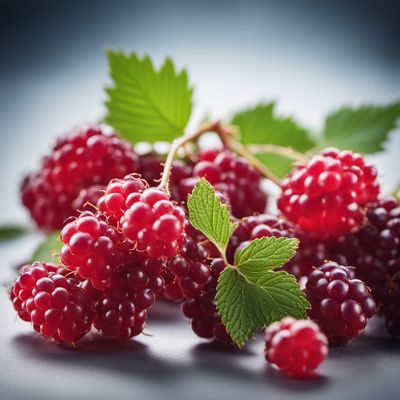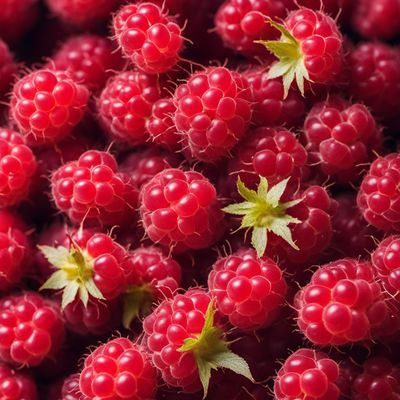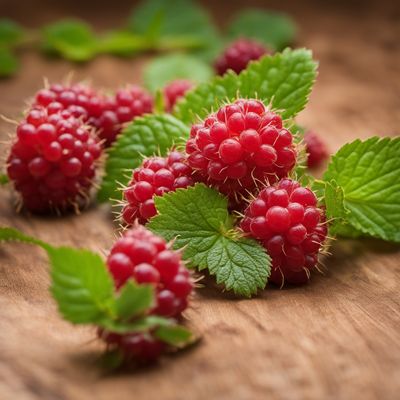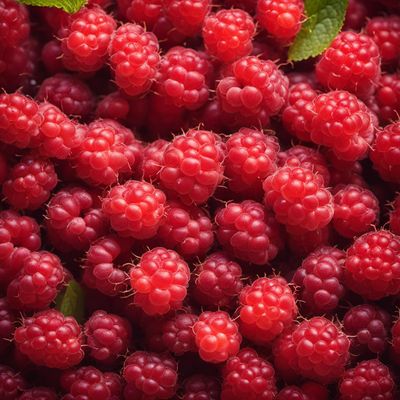
Ingredient
Boysenberries
The Alluring Berry: Boysenberries
Boysenberries are large, dark purple berries that are a cross between raspberries, blackberries, and loganberries. They have a sweet and tangy flavor, with a hint of tartness that adds complexity to their taste. Boysenberries are known for their juicy texture and vibrant color, making them a popular choice for jams, pies, desserts, and beverages.
Origins and history
Boysenberries were first cultivated by Rudolph Boysen in the early 20th century. The exact origin of the berry is debated, but it is believed to be a hybrid of various berry species. Boysenberries gained popularity in the United States, particularly in California, where they were commercially grown and became a staple in local cuisine. Today, boysenberries are enjoyed worldwide for their unique flavor and culinary versatility.
Nutritional information
Boysenberries are a good source of dietary fiber, vitamin C, and antioxidants. They are also low in calories and fat. The deep purple color of boysenberries indicates the presence of anthocyanins, which are beneficial plant compounds with antioxidant properties. Including boysenberries in your diet can contribute to overall health and well-being.
Allergens
There are no known allergens associated with boysenberries, but individuals with berry allergies should exercise caution and consult with a healthcare professional if unsure.
How to select
When selecting boysenberries, look for plump, firm berries with a deep purple color. Avoid berries that are overly soft, moldy, or have signs of damage. Boysenberries should have a sweet aroma and be free from any unpleasant odors. If purchasing frozen boysenberries, ensure that the packaging is intact and free from ice crystals, which may indicate thawing and refreezing.
Storage recommendations
To maintain the freshness of boysenberries, store them in a sealed container in the refrigerator. Avoid washing the berries until ready to use, as excess moisture can promote spoilage. Boysenberries can also be frozen for long-term storage. To freeze, spread the berries in a single layer on a baking sheet and place in the freezer until firm. Transfer the frozen berries to airtight containers or freezer bags and store in the freezer for up to a year.
How to produce
Boysenberries can be grown in home gardens or small-scale farms with the right conditions. They require well-drained soil, ample sunlight, and regular watering. Boysenberry plants are typically propagated through cuttings or by purchasing young plants from nurseries. With proper care and maintenance, you can enjoy a bountiful harvest of fresh boysenberries.
Preparation tips
Boysenberries can be enjoyed fresh as a snack or used in a variety of culinary applications. They are commonly used in jams, jellies, pies, tarts, and desserts such as cobblers and crisps. Boysenberries can also be blended into smoothies, used as a topping for yogurt or ice cream, or incorporated into baked goods such as muffins and cakes. Their vibrant color and tangy flavor make them a delightful addition to salads or savory dishes like sauces or marinades.
Substitutions
Raspberries, blackberries, or loganberries can be used as substitutes for boysenberries. These berries have similar characteristics and flavors, making them suitable alternatives in recipes. However, the specific taste and texture of boysenberries may not be replicated exactly.
Culinary uses
Boysenberries are widely used in the culinary world for their unique flavor and versatility. They are commonly used in jams, pies, desserts, and beverages. Boysenberry jam is a classic favorite, often spread on toast or used as a filling for pastries. Boysenberry pies and tarts are also popular, showcasing the berry's vibrant color and sweet-tart taste. In addition, boysenberries can be used to make sauces, syrups, and coulis to accompany various dishes. Their tangy flavor pairs well with both sweet and savory ingredients, making them a versatile ingredient in the kitchen.
Availability
Boysenberries are primarily cultivated in regions with a suitable climate, such as the United States (particularly California), New Zealand, and Australia. They are also grown in smaller quantities in other countries with favorable growing conditions. Boysenberries are commonly available in local farmers markets, specialty grocery stores, and supermarkets in these regions.
More ingredients from this category

Olallieberries
The Luscious Berry: Olallieberries

Loganberries
The Luscious Loganberry

Youngberries
The Sweet and Tangy Delight

Tayberries
The Tangy Delight

Other species and hybrids of genus Rubus, not elsewhere mentioned
The Berry Bonanza

Salmonberries
The Jewel of the Forest

Dewberries
The Wild Berry Treasure: Dewberries

Thimbleberries
The Delicate Delight: Exploring the World of Thimbleberries